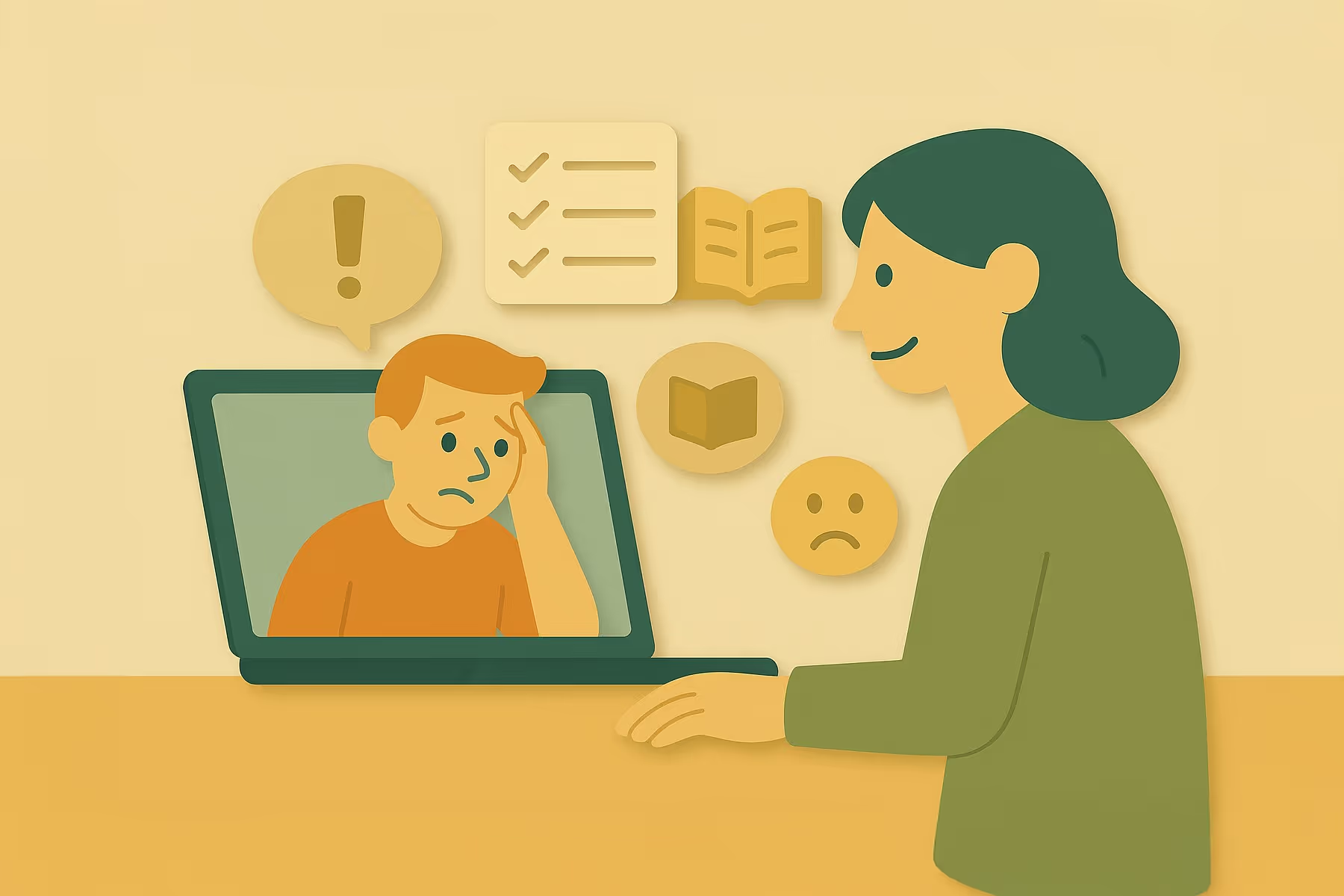Starting virtual therapy is a big step. It’s more than just turning on your camera and saying hello. Things can feel different when you're not in the same room as your client. The way you connect, talk, and even pause in silence, all of it changes. And that can feel a little scary at first.
If you’re finding the switch to online therapy tricky, you’re not alone. Here are three simple tips to help you feel more at ease and help your clients feel safe and supported.
Even when we’re online, routines matter. Setting up clear steps for how each session will go can help your client feel safe. In play therapy, we call this the “therapy frame.”This might include agreeing on where sessions are held, when to mute or unmute, or how to handle distractions.
When you set these up early, it helps clients feel safer and more focused with a sense of direction. It also lowers the chance of technical and emotional surprises, which can disrupt the session flow.
It’s harder to pick up on body language and small cues through a screen. But that doesn’t mean you can’t still connect in meaningful ways. Try mixing your usual go-to activities with tools that let kids express themselves in other ways, such as:
These tools help clients share feelings they might not have words for. They also keep things fun and engaging!
Virtual therapy is different, and it’s okay to say that out loud. Telehealth research shows the importance of normalizing clients’ experiences with technology issues, screen fatigue, and feelings of distance. Therapists can say things like, “I know it can feel different and sometimes tiring to meet this way. That’s totally normal.” This helps clients know they’re not the only ones feeling that way. It builds trust.
It’s also helpful to work together with clients on small routines to reset the session if things feel off. Try things like a brief grounding exercise, a short stretch, or a quick chat about how the client is feeling about the technology that day.
Switching to virtual therapy is a learning curve not only for your clients, but for you as well. These tips can help therapists create a smoother, more human experience that keeps the focus on healing and growth.

Lorem ipsum dolor sit amet, consectetur adipiscing elit, sed do eiusmod tempor incididunt ut labore et dolore magna aliqua. Ut enim ad minim veniam, quis nostrud exercitation ullamco laboris nisi ut aliquip ex ea commodo consequat. Duis aute irure dolor in reprehenderit in voluptate velit esse cillum dolore eu fugiat nulla pariatur.
Block quote
Ordered list
Unordered list
Bold text
Emphasis
Superscript
Subscript
.avif)